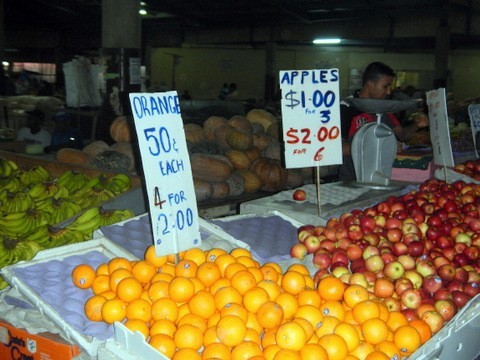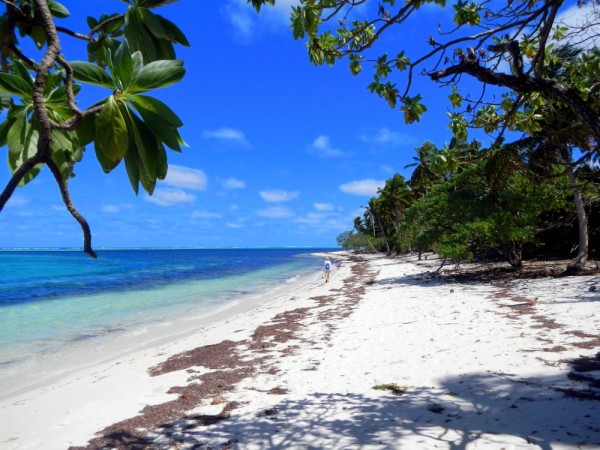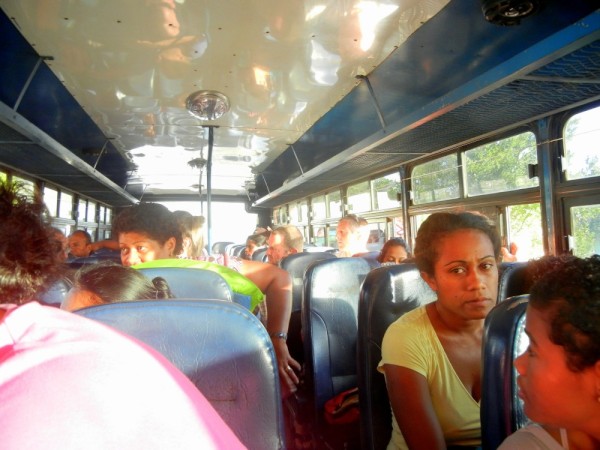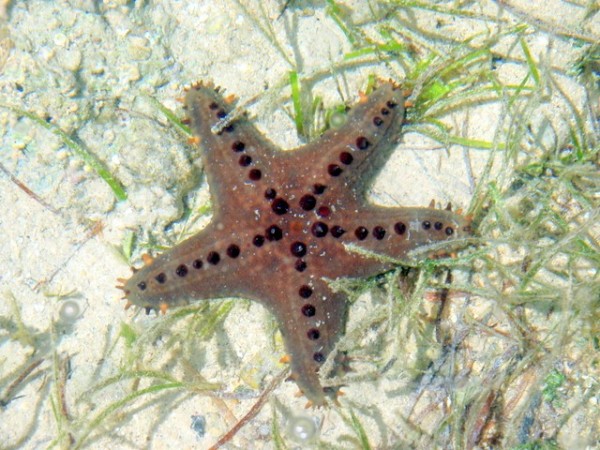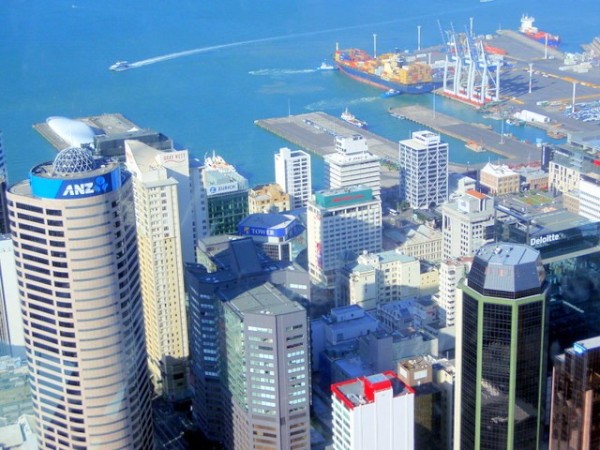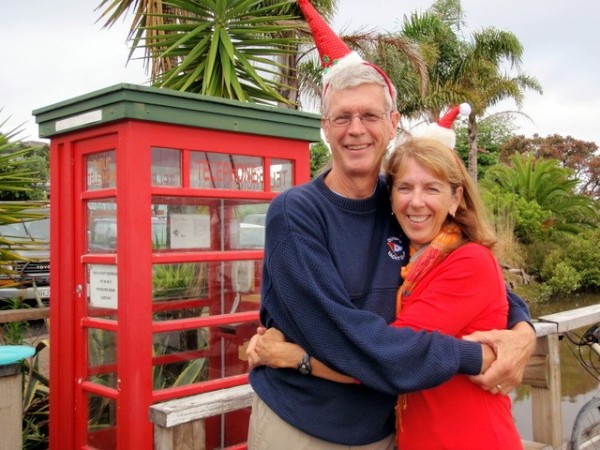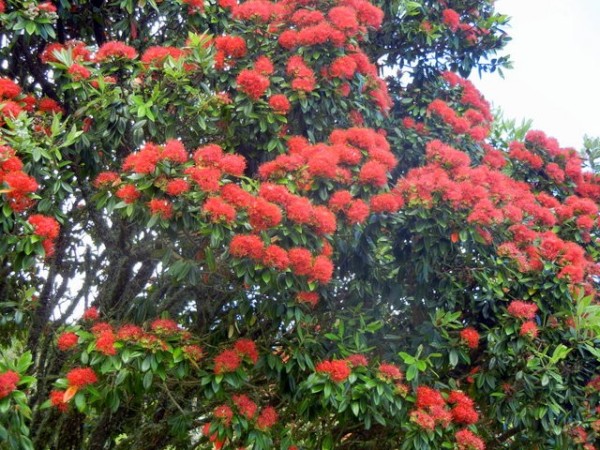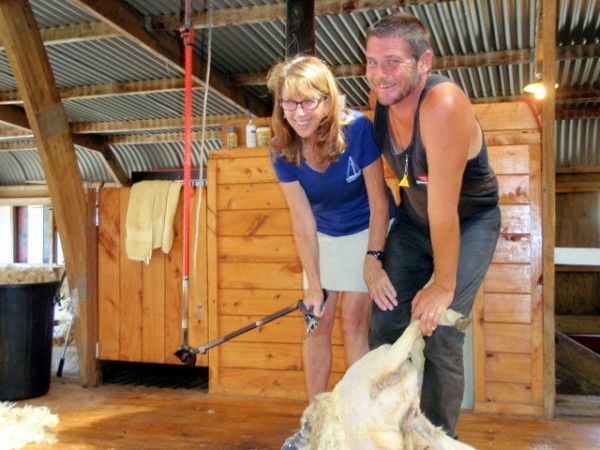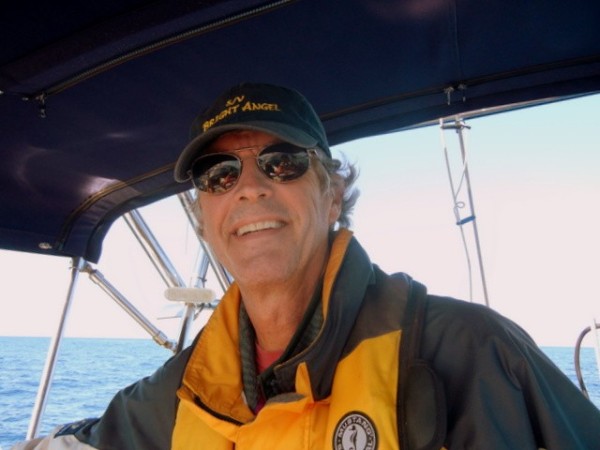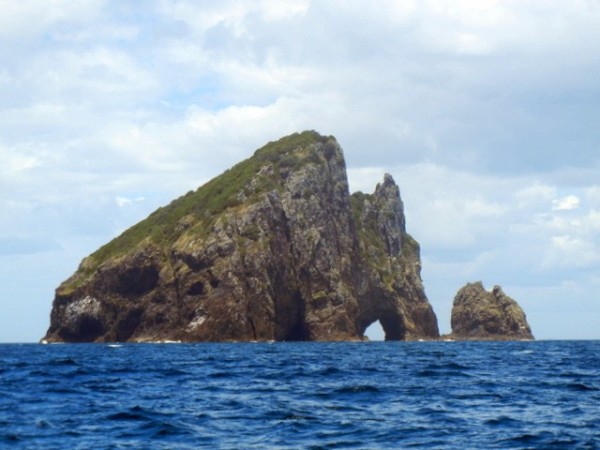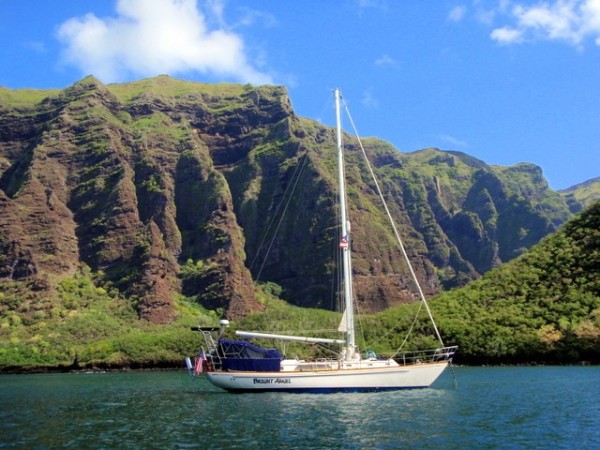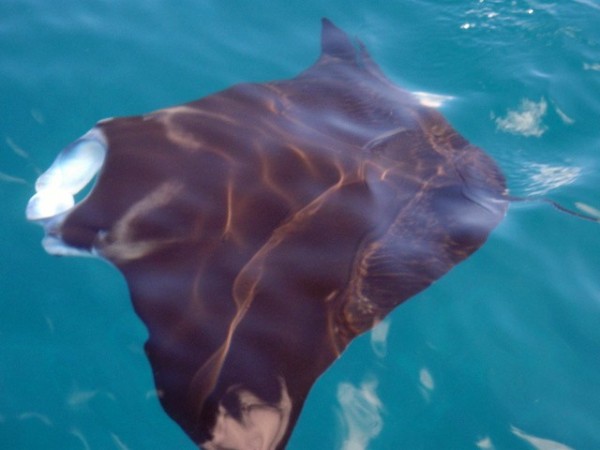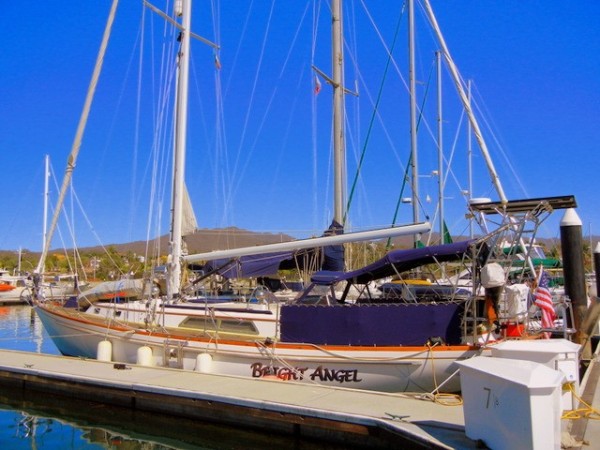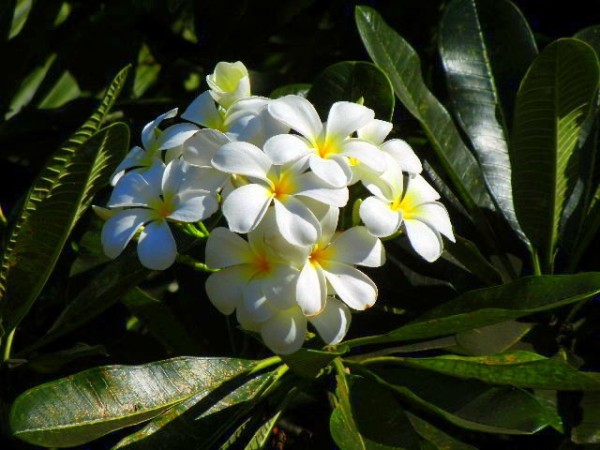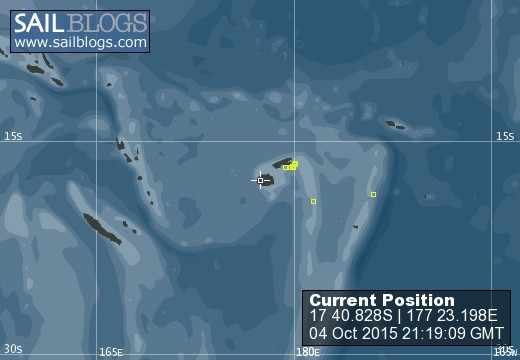
SailBrightAngel
The Adventure Continues
20 October 2013 | Fulanga, Southern Lau Group, Fiji
20 October 2013 | Village of Maunaithaki, Fulanga, Lau Group, Fiji
20 October 2013 | Village of Maunaithaki, Fulanga, Lau Group, Fiji
20 October 2013 | Southern Lau Group, Fiji
29 September 2013
10 August 2013 | Savusavu, Vanua Levu
06 July 2013
06 July 2013
06 July 2013
03 July 2013
02 July 2013
01 July 2013
29 June 2013
24 June 2013
13 November 2012 | Vava'u, Tonga
04 September 2012 | Bora Bora, French Polynesia
31 July 2012 | Uturoa, Raiatea
14 June 2012 | Tiputa, Rangiroa, Tuamotus
PARADISE FOUND - The Island of Fulanga (Vulaga). WOW!
20 October 2013 | Southern Lau Group, Fiji
Linda
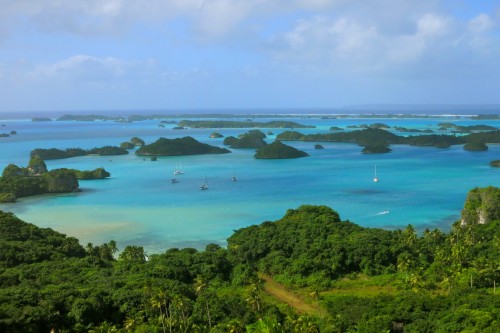
Shades of aquamarine, turquoise, jade, amethyst and a spectrum of colors I'm not sure there are names for; some subtle, some neon. White sandy beaches so bright it is difficult to look at them without the dimming aid of Polaroid's. Cartoon-like coral islets shaped like cupcakes, muffins and mushrooms dot the lagoon. They have been carved from the never ending ebb and flow of tides and wave action. Adding even more fantasy and character to their shapes, they each have their own little symbiotic groupies of plants and trees for landscaping. Jagged coral arches frame peek-a-boo views of distant crashing waves on the reef. All of this comes with assurance that you will never get bored with the scenery because as the light of day changes so do the colors, the shapes and the shadows. Magical!
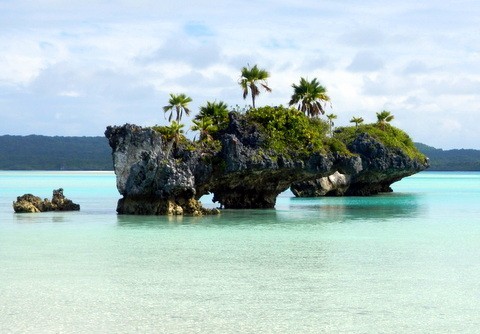
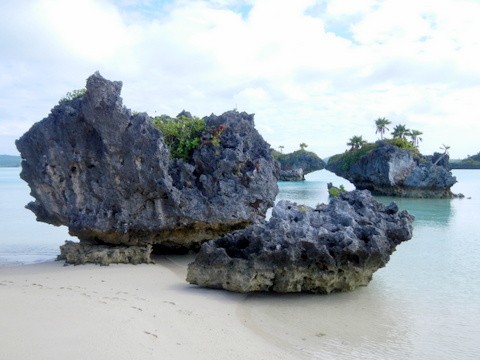
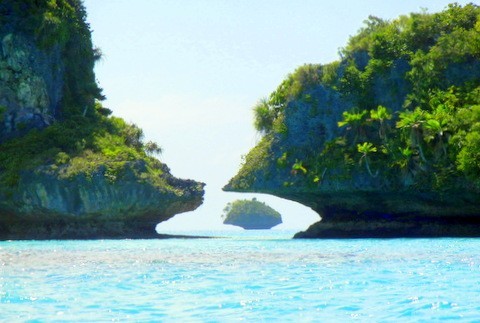
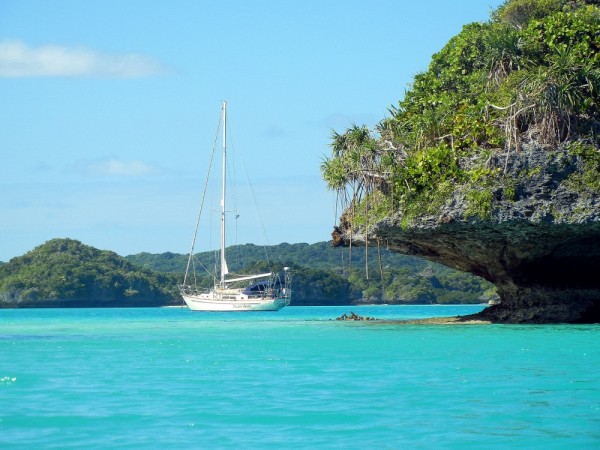
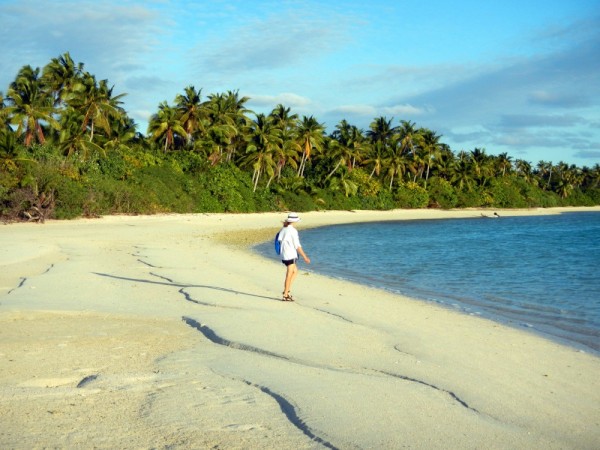
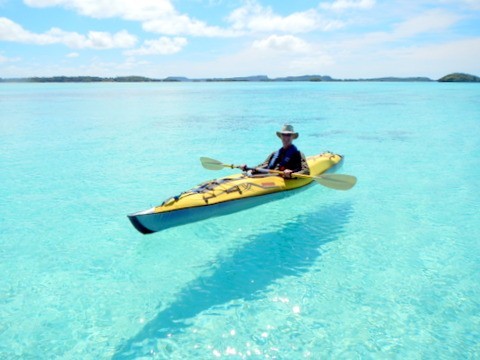
Getting to Vulaga (pronounced Vulanga, or outside the Lau, Fulanga) requires equal parts of luck, flexibility and desire. When you are lucky enough to get a specific weather window you have to sometimes hustle to get everything ready for the passage, even putting your previous plans aside and heading in a new direction, literally. We missed the last window and I was very disappointed. Then we thought it was getting too late in the season to go even if a new window did open because we had a list of other places on our itinerary and Vulaga is not exactly on the way to anyplace else. Subject closed - back to plan "A." But wait. While provisioning in Savusavu a weather window opened. "But I realllly want to go." Bob realllly didn't want to go. But, as the saying goes - "When mama ain't happy, nobody's happy." Get the picture? Bob, bless his heart, said "We're going to Vulaga." "Hooray!" He didn't say hooray, I did! Love you Bob!
After 32 hours at sea we arrived within view of Vulaga, just after sun up on Monday morning, August 12. We waited a few hours for slack tide to allow us to navigate safely through the pass in the reef. It is a fairly narrow pass (165 feet) and only about 20 feet deep. There is always a bit of anxiety when entering a new anchorage, but when that includes timing the tidal changes to negotiate a pass, rapidly changing depth, waves crashing on both sides of the boat and coral bommies scattered about, we instinctively tense up a bit. Once through, exhaling very loudly and our shoulders dropping to their normal positions is our bodies' way of signaling our brains we are safe. I love that feeling!
Bob has a ritual he calls 'anchor down beer.' Once the anchor is down and the snubbers attached he sits down for a cold one. This time it was only 10:30a.m.,so I was sure he would delay the celebratory brewskie. Nope! I guess a ritual is a ritual, regardless of the time of day! After all, we are on island time and as Jimmy says, "Its five o'clock somewhere."
Next ritual of the day was Sevusevu - not to be confused with Savusavu, our last port of call (although it is not unusual to hear cruisers mix up the names). Sevusevu is a significant and ancient ceremony of Fijan culture. It's kind of like bringing a hostess gift when someone invites you to their house for dinner. In this case it is a formal way of asking for acceptance into the village. A gift of kava root (yaqona) is given to the headman of the village (or Turanga ni Koro) who in turn presents it to the chief. You might wonder how we find the Turanga ni Koro. The term coconut telegraph comes to mind here, because it seems the villagers know we have arrived and the headman is standing by before the hook is down. The moment we hit the land/village someone appears to guide us to the appropriate person. Properly dressed in our sulus (skirts) Bob and I walked the trail to the village, about a twenty minute walk on a cleared and very wide path. I am happy to report that Bob has truly embraced wearing a sulu and has become one with his skirt. He has learned to" wrap and fold" now without any help. So, you can teach an old dog new tricks!
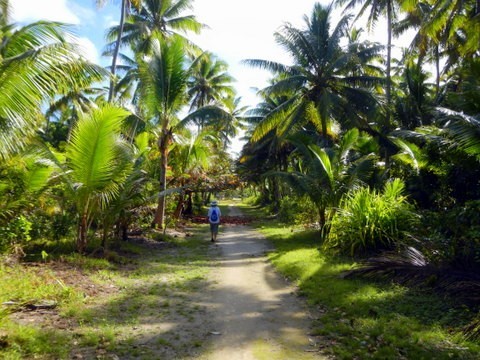
On the path to the village of Maunaithaki.
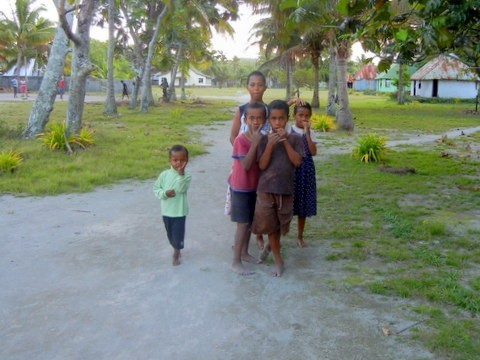
The children . . . always the first to greet us!
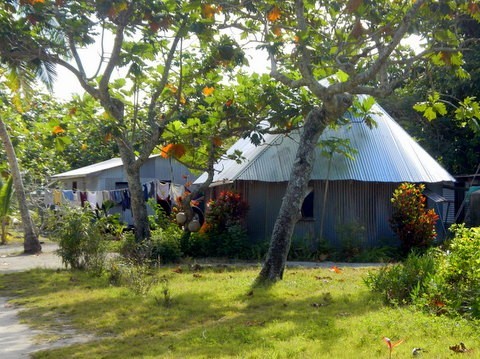
Maunaithaki village house.
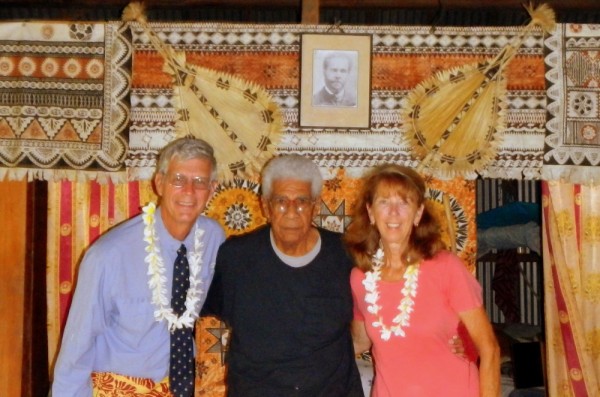
Sevusevu with the 82 year old Chief.
The main village on Vulaga has a population of about 80 people. The houses are quite spacious; most have wood frames, corrugated metal siding and roofs, and concrete floors. The cooking facilities are always in a separate area on wood fired stoves. There is no refrigeration, no electricity, and water for the whole community is from a large rain catchment tank with one spigot. The houses and village are very tidy; this was the cleanest village we have seen so far. There are two other villages on the island; one within walking distance and the other requires a boat ride. The only school is in the main village, employs four teachers, and has 50 students K through level 8.
We knew right away this was a place that would keep us captivated in awe for weeks. It is sensory overload of the best kind. Every day we experienced something for the first time. Have you guessed? We loved it there. Probably the best way to convey our odyssey in Vulaga is in bite size pieces, one story at a time. Even after only a week in Vulaga, trying to recall all that we had seen and done in that short time was like trying to drink from a fire hose! And so the adventure continues . . . .
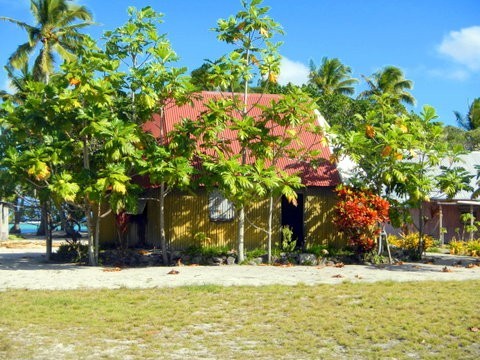
Maunaithaki house with a tree garden!






Getting to Vulaga (pronounced Vulanga, or outside the Lau, Fulanga) requires equal parts of luck, flexibility and desire. When you are lucky enough to get a specific weather window you have to sometimes hustle to get everything ready for the passage, even putting your previous plans aside and heading in a new direction, literally. We missed the last window and I was very disappointed. Then we thought it was getting too late in the season to go even if a new window did open because we had a list of other places on our itinerary and Vulaga is not exactly on the way to anyplace else. Subject closed - back to plan "A." But wait. While provisioning in Savusavu a weather window opened. "But I realllly want to go." Bob realllly didn't want to go. But, as the saying goes - "When mama ain't happy, nobody's happy." Get the picture? Bob, bless his heart, said "We're going to Vulaga." "Hooray!" He didn't say hooray, I did! Love you Bob!
After 32 hours at sea we arrived within view of Vulaga, just after sun up on Monday morning, August 12. We waited a few hours for slack tide to allow us to navigate safely through the pass in the reef. It is a fairly narrow pass (165 feet) and only about 20 feet deep. There is always a bit of anxiety when entering a new anchorage, but when that includes timing the tidal changes to negotiate a pass, rapidly changing depth, waves crashing on both sides of the boat and coral bommies scattered about, we instinctively tense up a bit. Once through, exhaling very loudly and our shoulders dropping to their normal positions is our bodies' way of signaling our brains we are safe. I love that feeling!
Bob has a ritual he calls 'anchor down beer.' Once the anchor is down and the snubbers attached he sits down for a cold one. This time it was only 10:30a.m.,so I was sure he would delay the celebratory brewskie. Nope! I guess a ritual is a ritual, regardless of the time of day! After all, we are on island time and as Jimmy says, "Its five o'clock somewhere."
Next ritual of the day was Sevusevu - not to be confused with Savusavu, our last port of call (although it is not unusual to hear cruisers mix up the names). Sevusevu is a significant and ancient ceremony of Fijan culture. It's kind of like bringing a hostess gift when someone invites you to their house for dinner. In this case it is a formal way of asking for acceptance into the village. A gift of kava root (yaqona) is given to the headman of the village (or Turanga ni Koro) who in turn presents it to the chief. You might wonder how we find the Turanga ni Koro. The term coconut telegraph comes to mind here, because it seems the villagers know we have arrived and the headman is standing by before the hook is down. The moment we hit the land/village someone appears to guide us to the appropriate person. Properly dressed in our sulus (skirts) Bob and I walked the trail to the village, about a twenty minute walk on a cleared and very wide path. I am happy to report that Bob has truly embraced wearing a sulu and has become one with his skirt. He has learned to" wrap and fold" now without any help. So, you can teach an old dog new tricks!

On the path to the village of Maunaithaki.

The children . . . always the first to greet us!

Maunaithaki village house.

Sevusevu with the 82 year old Chief.
The main village on Vulaga has a population of about 80 people. The houses are quite spacious; most have wood frames, corrugated metal siding and roofs, and concrete floors. The cooking facilities are always in a separate area on wood fired stoves. There is no refrigeration, no electricity, and water for the whole community is from a large rain catchment tank with one spigot. The houses and village are very tidy; this was the cleanest village we have seen so far. There are two other villages on the island; one within walking distance and the other requires a boat ride. The only school is in the main village, employs four teachers, and has 50 students K through level 8.
We knew right away this was a place that would keep us captivated in awe for weeks. It is sensory overload of the best kind. Every day we experienced something for the first time. Have you guessed? We loved it there. Probably the best way to convey our odyssey in Vulaga is in bite size pieces, one story at a time. Even after only a week in Vulaga, trying to recall all that we had seen and done in that short time was like trying to drink from a fire hose! And so the adventure continues . . . .

Maunaithaki house with a tree garden!
Comments
| Vessel Name: | Bright Angel |
| Vessel Make/Model: | 1990 Mason 44 Hull # 141 |
| Hailing Port: | Olympia, WA |
| Crew: | Linda & Bob Hargreaves |
| About: | |
| Extra: |
Bright Angel's Photos - Main
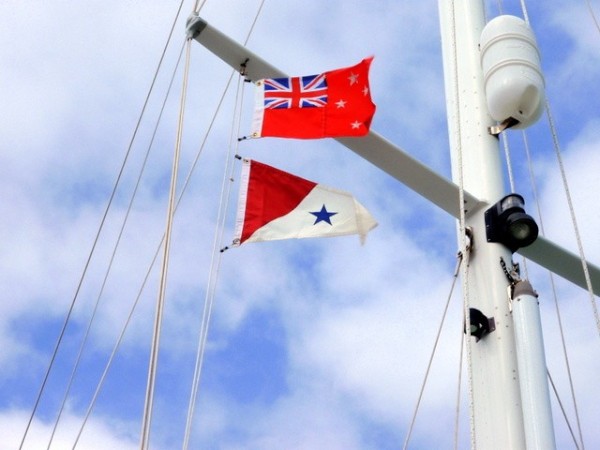 |
Our first stop, where we cleared into New Zealand, was Opua. Before moving south to Whangarei we visited some of the local sights.
17 Photos
Created 25 June 2013
|
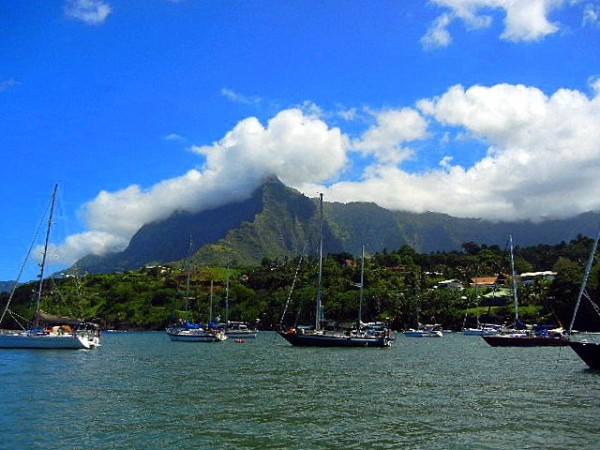 |
Hiva Oa was our first "Landfall in Paradise" after leaving Mexico, and our introduction to life in the islands of French Polynesia.
14 Photos
Created 6 August 2012
|
Sail Bright Angel
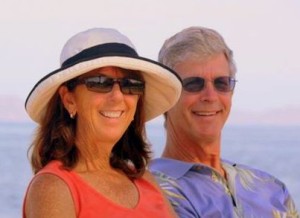
Who: Linda & Bob Hargreaves
Port: Olympia, WA
Current Position
Favorite Links
- John & Lisa on SV Orcinius
- Bill & Cat on SV Island Bound
- Bob & Ann on SV Charisma
- Chris & Rani on SV Ladybug
- Craig & Bruce on SV Gato Go
- Jon & Carol on SV Arnamentia
- Jon & Heather on SV Evergreen
- Ken & Beth on SV Eagles Wings
- Mark & Anne on SV Blue Rodeo
- Pat & John on SV The Rose
- Rich & Cyndi on SV Legacy
- Sail Bright Angel
